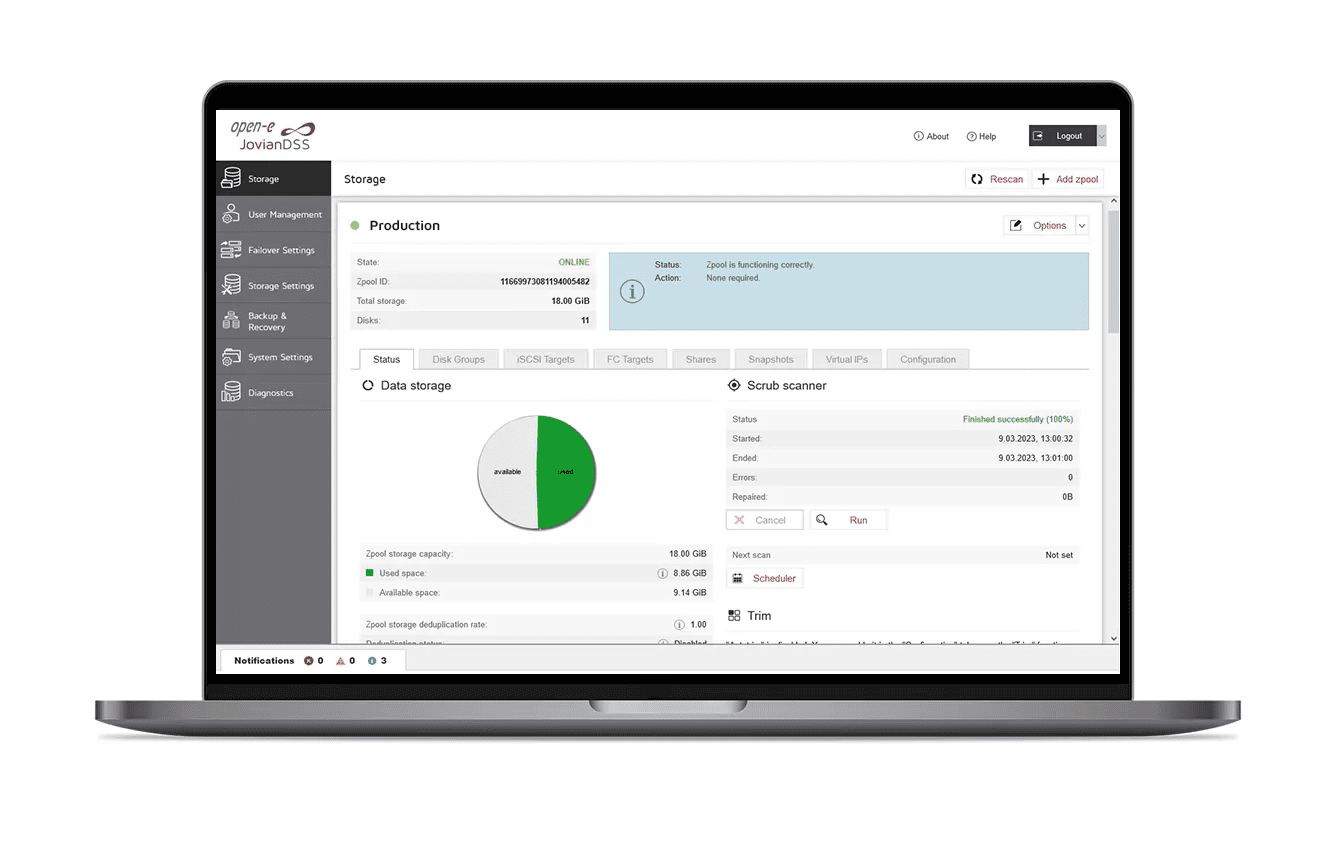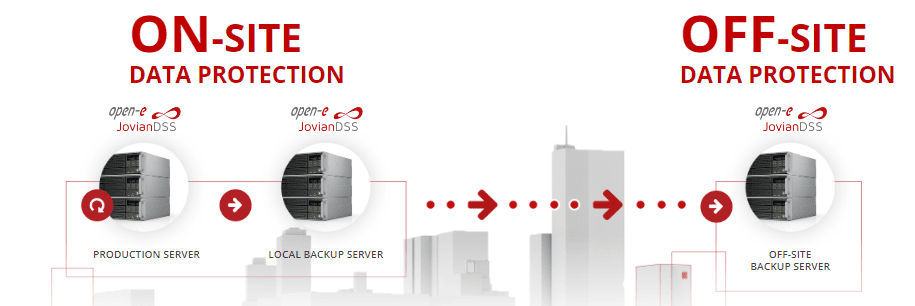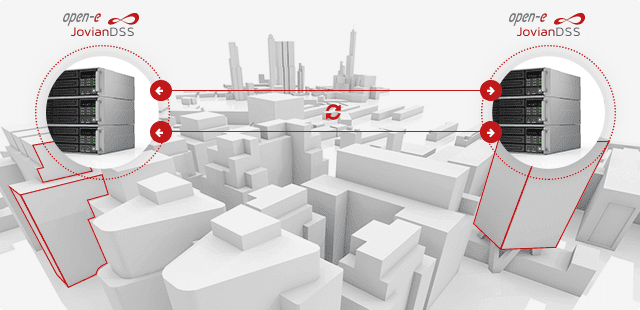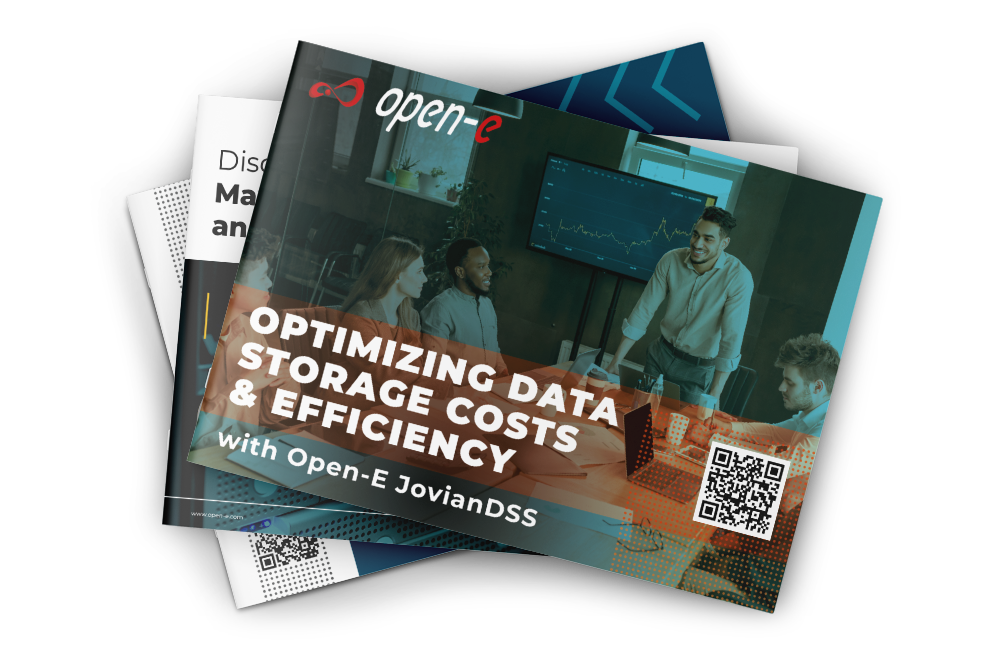The smooth workflow of almost any business today is mainly based on data management. Media, transportation and logistics, finance, the public, government, or medical sectors – basically, you can list them endlessly. It doesn’t matter what industry you work in – security with simultaneous access to data is a must. Therefore, choosing a file (data) management system that combines performance, ease of use, and the highest security level is essential. Undoubtedly, ZFS is a system that combines all these attributes while being one of the most efficient, reliable, and secure file systems.
Let’s take a look at the ZFS from a business perspective to find out what makes it such an appreciated and trustworthy tool that supports its users on so many levels.
The Origins of ZFS
Sun Microsystems created Zettabyte File System in 2001 to be the basis for the OpenSolaris operating system. They’ve planned and managed to design a system that aspired to provide next-generation NAS solutions with better data safety, reliability, and performance. The aim and goal achieved were to make any computing unit run without interruptions or unexpected errors. As Dan Langille, during his speech at the EuroBSDcon in 2019, said:
“You run out of hardware before running out of ZFS address space”
Moreover, this file system occurred to be ahead of its time. Over twenty years later, when single drive capacity, therefore, the whole storage and pool capacity, is much bigger than expected in the early 2000s, it still manages to work stably with no interruptions or hiccups. With its open-source nature, it is an excellent basis to build from. What’s more, it provides several features that expand your business reliability and efficiency and provides data protection that does not yield to the ever-increasing demands of business requirements nowadays.
Features & Benefits of Using ZFS in Business
First and foremost, what makes the ZFS so unique, is its ability to keep your data consistent. This superpower is based on the checksum algorithm. It’s used by the powerful ZFS’ self-healing mechanism to verify data every time it is accessed to find discrepancies between original and redundant data and fix it if there’s an error. This way the system is able to restore it from the parity data and gives the correct data to the application.
We can say that checksums are the foundation of data protection since they are utilized by other ZFS built-in mechanisms, such as:
- scrubbing uses checksums to detect and correct data that includes errors. This process can be automated (take place weekly, monthly, quarterly, on given dates, etc.) or started manually. Compared to self-healing, scrubbing only happens once scheduled or intentionally run because it consumes lots of resources from your system (CPU, RAM, etc.) as it scans not only the often accessed data but all of it
- resilvering, on the other hand, repairs damaged blocks if any of the disks in the array has been replaced. Interestingly, unlike most other systems, ZFS focuses only on blocks that are in use, so the whole process shortens the rebuild time significantly.
In addition to that, there is the copy-on-write feature. Unlike most other filesystems, ZFS enables to store the new data in a separate block without overwriting the old one. You will lose neither the read nor the written data, so your business processes are safe at all times
The safety of your business when using ZFS starts with the smallest piece of information you store. This is the very first level of protection that ensures data integrity as well, but there’s more!
Ransomware Resilience
Virus attacks, including those using ransomware, are among the most serious threats to businesses today. The information we have on this from 2022 is terrifying:
- 71% of global companies were affected by ransomware
- Over 493 million ransomware attacks were detected worldwide
- 57% is only how many companies use the backup to regain access to their data
- 26 new ransomware families were discovered last year
Keep in mind that while running a business, you have to think of data protection all the time. This is another way ZFS shows its potential by offering features that make it much easier to manage. Once such an attack happens, it prevents the data from being lost and you from paying the ransom. ZFS allows for making continuous snapshots of a system and rolling back to the state from before the attack. Snapshots are read-only files, which means that the content they hold (data state) cannot be amended.
Open-E JovianDSS, which is based on the ZFS, enhances this functionality with retention plans. It allows for scheduling what are the retention intervals of making such snapshots and keeping them available for as long as you wish (retention periods). You don’t need to worry about hackers and data protection because the whole system is ready to be rolled back.

On- & Off-site Data Protection & High Availability Clustering
That’s not where the possibilities end. On- & Off-site Data Protection further enhances the quality of Open-E JovianDSS software and all its services. It offers a strategy for Backup, and Disaster Recovery by enabling scheduled asynchronous replication within and outside the local sites, using the retention plans feature mentioned above. This way, servers with critical data can be quickly and easily restored in case of an unforeseen disaster using on- or off-site resources.

With Open-E JovianDSS, you can also eliminate potential downtimes and ensure the High Availability of your data. It enables you to build your system with two nodes, so the system stays fully operational in the event of one of these nodes failing, thanks to the failover cluster functionality. That means improved data integrity, stability, and performance for your business applications and services with no downtime.

The True Potential of a File System
First, what comes to mind in such a case is “how much storage do I need to have and how often should I expand it to all my storage to accommodate it?”. Well, ZFS is a system allowing for wide scalability. Theoretically, it can be expanded even up to 16EiB field, which is a huge number. Thus, you don’t have to stress about the system’s capability in development – it handles much more data than its competitors.
That’s not the end of how ZFS’ potential exceeds other file systems. Find the table below to see how rich in native features expected to manage and maintain the company’s data storage infrastructure it is if compared to other well-known file systems:


As you can see, ZFS offers much more than other file systems. That’s why we can say without any hesitation that it was ahead of its time once it was created and still holds up. There’s no need to overload the system resources by installing multiple data protection software or adding hardware RAID to your server because ZFS has it all by default. Previously mentioned features combined with RAID-Z striping give you a lot more potential than its competitors on the market. At Open-E, we based our flagship product – Open-E JovianDSS – on ZFS because of over 25 years of experience in the data storage market, lots of insights from our partners and clients make us sure what exactly enterprise business needs to ensure maximum data protection, business continuity, and disaster recovery.
ZFS: A System to Choose for Business Success
ZFS is indeed the most efficient and reliable file system on the data storage market that continuously supports your company operations. This is not only our perspective. Many of our partners and customers are sure that a ZFS-based system, like Open-E JovianDSS, is what their company needs to be stable and efficient:



No matter what kind of business you run – you need well-protected data storage and an infrastructure that is efficient, reliable, and scalable accordingly to its growth. ZFS is a foundation that gives you plenty of possibilities and eliminates blockers for your company’s expansion and growth.
Optimize Data Storage Efficiency & Minimize Its Costs – Open-E Guide
Maximize performance and cost efficiency with our in-depth guide on ZFS-powered data storage optimization. Discover how advanced ZFS caching mechanisms enhance speed and reliability while reducing infrastructure expenses.
Get a detailed comparison of Traditional vs. Optimized Data Storage Setups, including:
- Initial setup costs: servers, storage, and network equipment
- Ongoing expenses: hardware upgrades, energy, and software licensing
- Total cost analysis over five years






